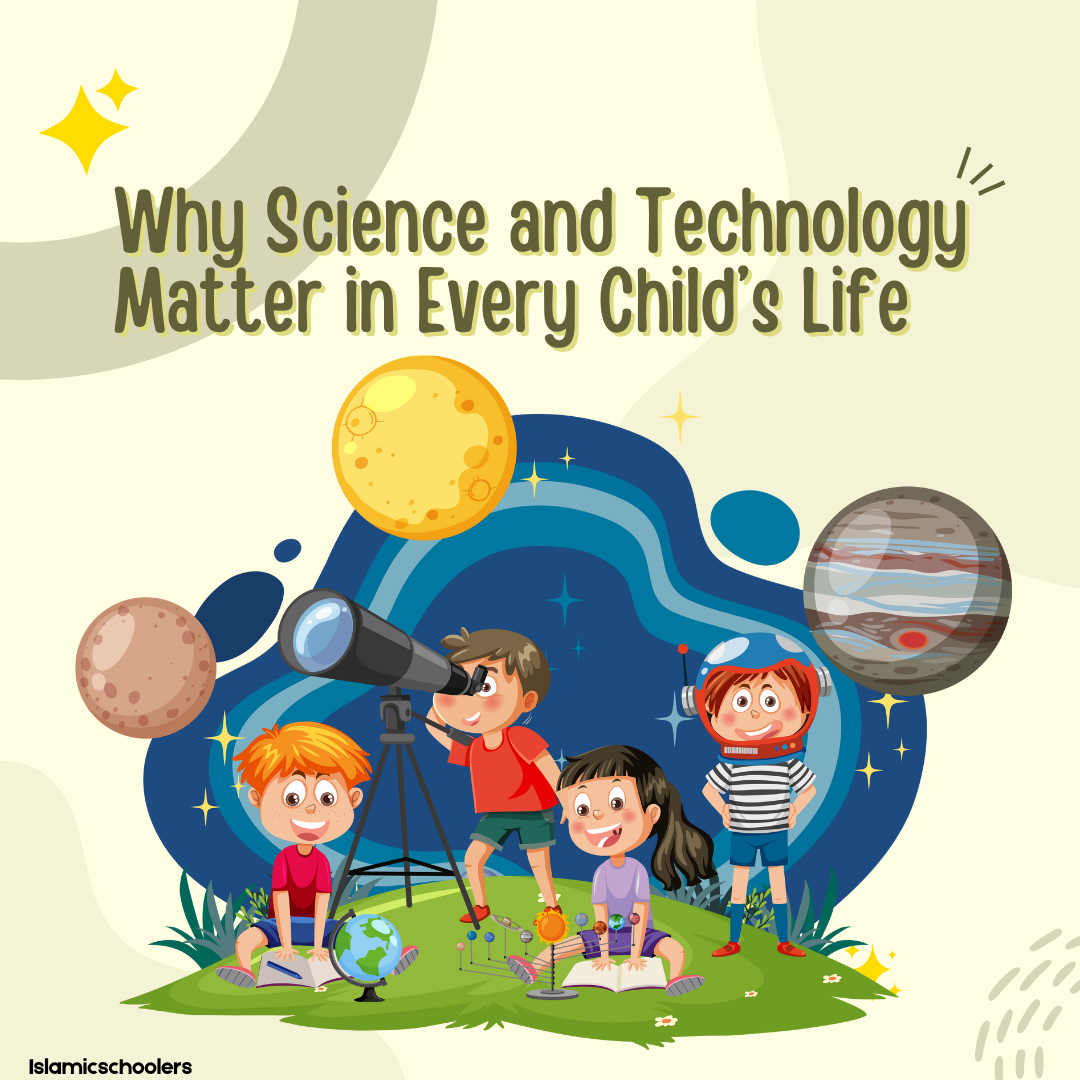
Every child is born with a sense of wonder. They ask “why” before they learn to read, they experiment before they can write, and their curiosity knows no bounds. This natural thirst for understanding is the very foundation of science. When we bring science and technology into a child’s world, especially in homeschooling, we are not just teaching facts. We are feeding their imagination, empowering their minds, and preparing them for a life filled with purpose and discovery.
Science is not confined to a laboratory. It lives in the kitchen when children watch water boil. It’s in the backyard when they observe ants carrying crumbs, or in the sky when they see the moon follow them home. When we teach science at home, we are opening their eyes to the wonders of the world they live in. We are giving names to the patterns they see and helping them understand the logic behind everyday miracles.
Technology, on the other hand, is the tool that allows them to build, create, and connect. Children today are growing up in a world shaped by digital tools. From learning apps to video calls with grandparents, technology is part of their lives. But teaching them how it works, how to think critically, solve problems, and even create with it, gives them a sense of control and confidence. It turns them from passive users into active thinkers and builders.
Here homeschooling offers a beautiful freedom: the chance to make learning meaningful and personal. Science and technology are not subjects to check off a list, they are doorways. When taught with care and creativity, they lead children to ask deeper questions, to test their ideas, and to keep going even when they fail. And that is the true essence of learning.
Dear parents, imagine a child building a simple robot from spare parts, learning how it moves and why. Think of the excitement when they grow a plant from a seed and track its growth with a journal. These are not just lessons, they are life experiences. They teach patience, observation, curiosity, and the joy of discovery. Science teaches them how to think, and technology gives them the tools to bring their thoughts to life.
Beyond facts and figures, these fields shape character. How? Good question! Well how I see it is, science teaches honesty, because results only matter when they are true. It teaches humility, because there’s always more to learn. Technology teaches responsibility, how to use power wisely, how to create things that help others, and how to stay safe in a digital world.
In a homeschooling environment, parents have the rare opportunity to tailor science and technology to their child’s pace, interests, and dreams. A child who loves nature can study biology through garden projects. A child who enjoys puzzles can dive into coding games. There’s no one-size-fits-all method, just endless possibilities.
And the best part? You don’t need fancy equipment or a lab coat. Curiosity is the only real requirement. Books, online resources, everyday objects, and thoughtful conversation are enough to spark a lifelong interest.
We must remember, the future won’t be shaped by memorized answers but by curious minds. The children we are teaching today will be the problem-solvers, inventors, and thinkers of tomorrow. When we give them the gift of science and the skills of technology, we are giving them something more than knowledge. We are giving them the courage to explore, the strength to question, and the tools to shape a better world.
So let’s begin, not with pressure, but with purpose. Let’s answer their questions, guide their hands, and cheer for their discoveries. The world is waiting for their ideas, and it all begins with a spark. That spark lives in science and technology. And it starts right here, at home.
#islamicschoolers #InteractiveLearning #scienceandtechnology #kids #contentcreator #contentwriter #freelancer #freelancewriter

